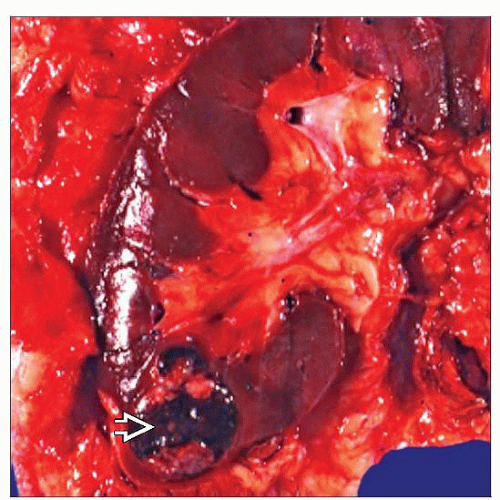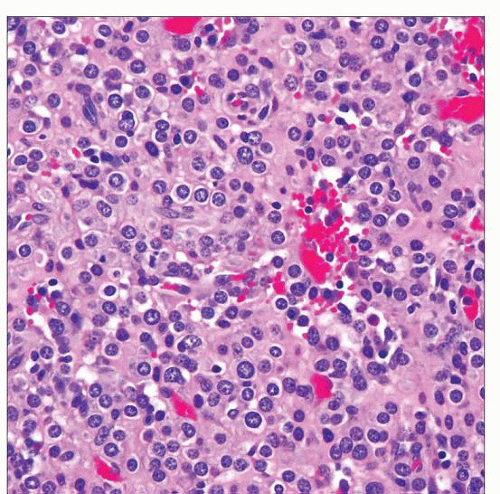Juxtaglomerular Cell Tumor (Reninoma)
Satish K. Tickoo, MD
Victor E. Reuter, MD
Key Facts
Terminology
Tumors derived from juxtaglomerular apparatus cells of the kidney, often characterized by association with hyperreninism, hypokalemia, hyperaldosteronism, and hypertension
Clinical Issues
Usually tumor of young adults
Most present with severe hypertension showing no to minimal response to medical therapies
Surgical excision of tumor mostly alleviates hypertension
Primarily tumor with benign outcome
Macroscopic Features
Well-encapsulated, unilateral, solitary tumor
Majority of tumors 2-3 cm in diameter
Microscopic Pathology
Typically, glomoid appearance with sheets of uniform round to polygonal cells with clear to slightly eosinophilic cytoplasm
Numerous capillaries, branching blood vessels, and sinusoids similar to those of hemangiopericytoma
Tumors often contain dispersed lymphoplasmacytic infiltrates
Diffuse (+) staining with antibodies to renin, vimentin, CD34, and CD117; variable positivity for actin-sm
Ultrastructure reveals typical membrane-bound rhomboid crystals representing renin protogranules
Top Differential Diagnoses
Glomus tumor
Solitary fibrous tumor/hemangiopericytoma
TERMINOLOGY
Abbreviations
Juxtaglomerular cell tumor (JGCT)
Synonyms
Reninoma
Definitions
Tumors derived from juxtaglomerular apparatus cells of the kidney, often characterized by
Association with hyperreninism, hypokalemia, and hyperaldosteronism
Hypertension that usually does not respond to medical antihypertensive therapy
ETIOLOGY/PATHOGENESIS
Hyperreninemia
With rare exceptions of nonfunctional tumors, most patients have elevated serum renin levels
Renal vein catheterization and selective measurement of renin values often helps to lateralize small tumors
Genetic Features
Loss of chromosomes 9 and 11, or LOHs of the same chromosomes, reported to be recurrent chromosomal abnormality
Involved genes not yet known
CLINICAL ISSUES
Epidemiology
Incidence
Rare tumor, < 100 cases reported
Age
Usually tumor of young adults (2nd-3rd decade)
However, age range of 6 to > 80 years (mean: 24)
Gender
More often reported in females than males (1.5:1)
Presentation
Hypertension
Most patients present with severe hypertension that shows no or only minimal response to medical therapies
Usually associated with hyperreninemia, hypokalemia, and hyperaldosteronism
Radiologically, no evidence of renal artery stenosis
All young patients with renal mass and hypertension need investigations to exclude JGCT
Surgical excision of tumor mostly alleviates hypertension
In rare cases, hypertension after nephrectomy due to secondary hypertensive angiopathy caused by tumor
Treatment
Surgical approaches
Surgical removal of tumor, by partial or total nephrectomy, is currently best therapeutic option
Medical antihypertensive therapies only transiently effective at best
Prognosis
Primarily tumor with benign outcome after resection
Rare cases with persistent, but usually less severe, post-nephrectomy hypertension
Stay updated, free articles. Join our Telegram channel

Full access? Get Clinical Tree





